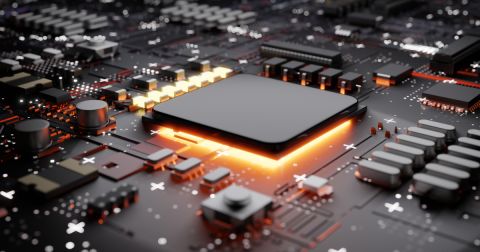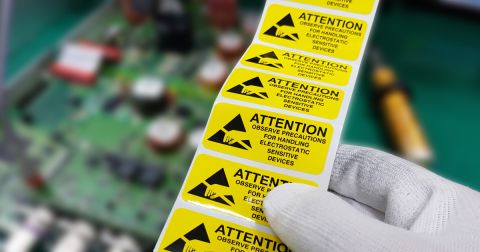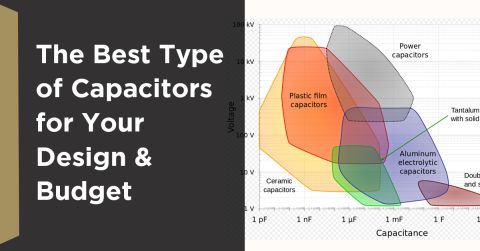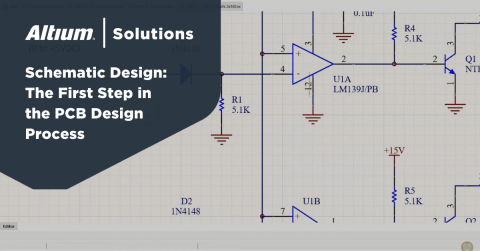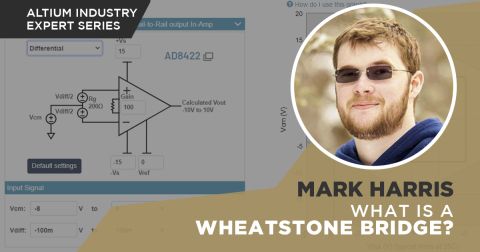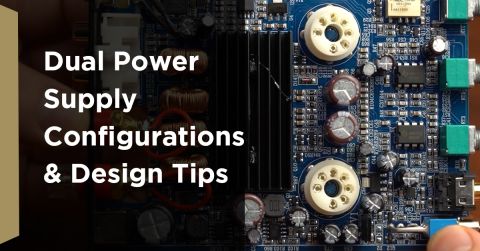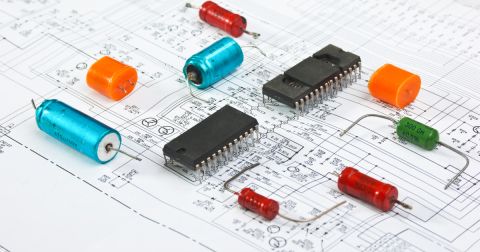Pi Filter Designs for Power Supplies

Pi Filters are a type of passive filter that gets its name from the arrangement of the three constituent components in the shape of the Greek letter Pi (π). Pi filters can be designed as either low pass or high pass filters, depending on the components used.
The low-pass filter used for power supply filtering is formed from an inductor in series between the input and output with two capacitors, one across the input and the other across the output. The main application of Pi filters in power supplies is to smooth a rectifier’s output by acting as a low pass filter.
The high-pass filter equivalent is formed by using a capacitor in series between the input and output with two inductors, one across the input and the other across the output.
This article will only be looking at the low-pass filter arrangement.
Basic Principles
The three components that form the Pi filter each act to block alternating current flow and pass direct current flow. The input capacitor performs the first and foremost stage of filtering out the AC component. Next, the inductor performs the next filtering stage, effectively removing any ripple. Finally, the output capacitor filters any AC component that has passed through the inductor.
Characteristics
The Pi filter will produce a high output voltage with minimal current drain, producing only a very small voltage drop at the output. Its other main advantage over different filter types is good ripple reduction. However, any current flow through the filter when a load is applied to the output will result in a voltage drop, and so the Pi filter cannot provide voltage regulation. This current will also flow through the inductor, meaning that an inductor with a high power-rating will be required in applications with a high output voltage. This limitation also has to be weighed up with the high input capacitance requirements and high voltage rating. In addition, such components will be bulky and expensive, impacting board design.
Voltage Regulation
The Pi filter requires a stable output voltage to be effective. A constantly changing output load or high current drift will result in poor voltage regulation. Their AC-powered power supplies application is typically immediately after the bridge rectifier circuit and before the switch-mode control circuit. They act to minimize the ripple on the rectified power line at the input to the converter stage of the power supply circuit.
Supply Isolation
Replacing the inductor in the low-pass Pi filter with a transformer will deliver the same ripple filtering function but with the benefit of providing isolation between the rectifier output and the switch-mode power converter. An added benefit is the transformer will also provide two-way common-mode noise filtering. In one direction, it reduces noise present on the AC input that will appear at the rectifier output. In the other direction, it prevents high-frequency noise generated by the switch-mode power converter circuit from being conducted back through the power supply and onto the mains line. In this configuration, the Pi filter is also known as a Power Line filter.
Impedance Matching
A benefit of Pi filters over simple L-C filters is the greater flexibility they offer the circuit designer for impedance matching. A simple L-C filter will only have single component values where the filter produces the required impedance for a given frequency. In contrast, the Pi filter will have multiple combinations of component values that all produce the impedance necessary for the given frequency. The different options will each have a different Q-factor, allowing the designer to choose a resonance behavior that best suits the circuit they are designing in a trade-off with efficiency.
Design Constraints
For a standard Pi filter, the typical size and weight of the components will require the allocation of a significant board area. They will also require careful mounting to prevent any external vibrations translating into the physical displacement of the components that can lead to cracking in their leads and the solder joints where they connect to the PCB.
Pi filters are typically used in high-power applications. So traces between the filter components will need to be kept as short as possible and with as low a current density as possible in connections and traces. Where high currents are involved, the inductor/transformer will require thermal management to prevent excessive heating effects.
Where isolation is required, then power line filters are available as standalone off-the-shelf units incorporated into the design or treated as an external element in the mains connection circuit. This option will come at a higher unit cost, simplifying the board design and potentially reducing overall manufacturing costs.
Summary
Pi filters are good for reducing power supply ripple within a power supply circuit as long as any physical size and weight constraints and thermal management issues do not preclude their use. Their voltage regulation limitations make them unsuitable for use as an output filter, but they are ideal as an intermediate filter stage within the power supply circuit. A transformer-based Pi filter also delivers power isolation into the design for safety-related applications as an added benefit.

